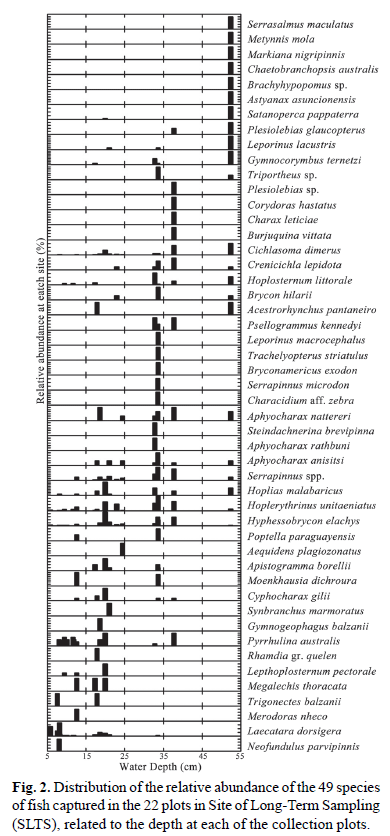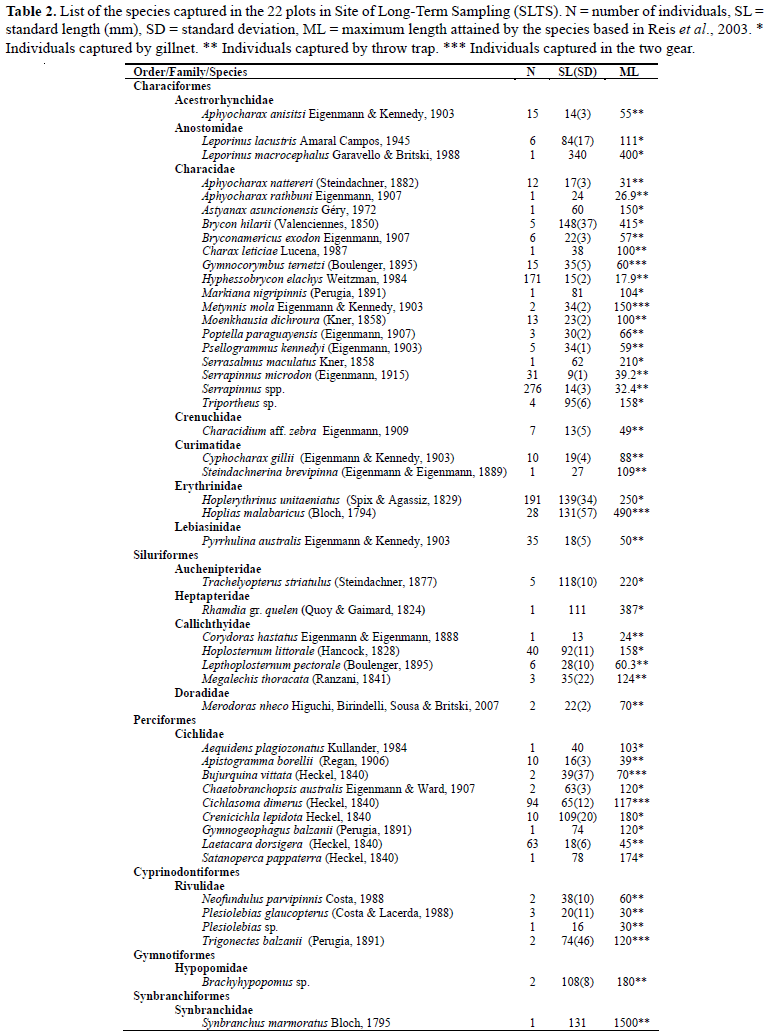The influence of habitat, biomass of herbaceous vegetation, depth and distance from permanent water bodies on the structure of fish assemblages of a seasonal floodplain was evaluated using data collected along 22 transects in an area of 25 km² in the floodplain of Cuiabá River, Pantanal, Brazil. Each transect was sampled for fish using throw traps and gillnets during the flood period of 2006. Multivariate multiple regression analysis and multivariate analysis of covariance indicated that depth was the only variable that affected the structure of the fish assemblage, both for quantitative data (abundance) and qualitative data (presence-absence). Species such as Neofundulus parvipinnis and Laetacara dorsigera were more abundant in shallower sites (below 25 cm), while Serrasalmus maculatus and Metynnis mola were found mostly in the deepest areas (over 55 cm). However, species such as Hoplias malabaricus and Hoplerythrinus unitaeniatus occurred at all sampled depths. Although the distribution of most species was restricted to a few sites, there was a positive relationship between species richness and depth of the water body. Surprisingly, the replacement of native vegetation by exotic pasture did not affect the fish assemblage in the area, at the probability level considered.
Assemblage structure; Effect of habitat alteration; Floodplain; Species richness; Temporary water





